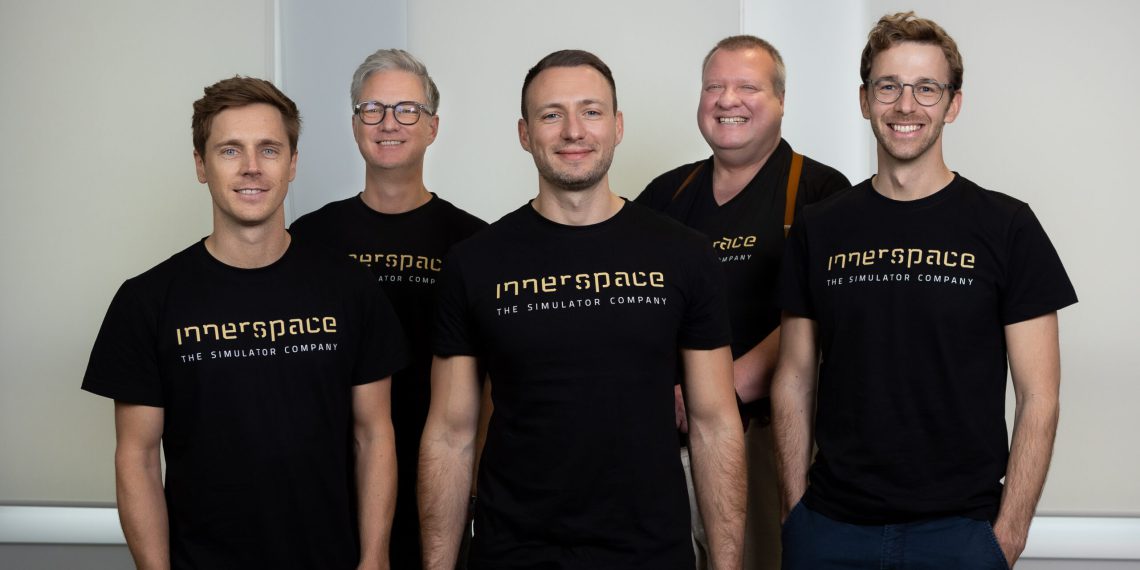In a second round of financing, startup Innerspace receives a seven-figure euro investment from its two existing investors MAD Ventures and High-Tech Gründerfonds (HTGF), as well as a new partner, aws Gründerfonds. The company develops virtual reality simulators for critical production areas in the life science industry, including clean rooms. The startup will use the investment to further expand its market presence and use the funds to increase its sales and consulting team. Product and market expansion into other areas of the pharmaceutical and chemical industries are also on the agenda.
Virtual reality simulators from Innerspace are used by big players in the pharmaceutical industry in Europe, North America and Japan. Employees in cleanrooms use Innerspace technology to train correct behavior, recognize reasons for mistakes, learn to avoid misconduct and train “experience through repetition” in a risk-free, virtual environment.
The principle of the flight simulator translated into the cleanroom
Innerspace’s simulators enable critical skills training with VR goggles and are accordingly handier than flight simulators. Nevertheless, they serve the same purpose: they minimize risks from cleanroom contamination and make errors visible, measurable and reproducible as critical events. Because of their strong connection to real-world challenges, training with virtual reality simulators is significantly more effective than existing training and learning methods. “Essentially, we are transferring the flight simulator success story to the qualification of production personnel in the life science industry: train faster, better and hazard-free experience,” illustrates Walter Ischia, Managing Director Sales and Finance at Innerspace.
“Innerspace delivers a complete solution consisting of analysis and consulting by experienced industry and training experts, a modular VR simulator solution that enables customer-specific adaptations, as well as roll-out and implementation support,” adds Alexander Wild, who is responsible for production and operations as managing director.
Targeted growth in the life science industry
“We are receiving a lot of interest from the industry for our VR simulators,” reports Ischia, ranking the potential of his solution: “In Europe alone, there are nearly 100,000 cleanroom employees, and worldwide there are about four times as many.”
“The principles behind our simulator are not only applicable to the cleanroom. The requirement to train correct behavior in critical production areas in an effective, measurable and reproducible way exists in many other areas besides the pharmaceutical and chemical industries with far higher numbers than just cleanrooms, for example in laboratories.”
- Sebastian Scheler, Co-Founder
Success in the seed phase made investors take notice
Innerspace has managed to grow successfully even during the crisis. As a result, the company has now been able to bring aws Gründerfonds on board, in addition to its existing investors, the German High Tech Gründer Fonds and the Austrian investor MAD Ventures.
Christoph Haimberger, Managing Director of aws Gründerfonds, says: “I consider virtual reality to be a great innovation that is increasingly changing industries and services. Thanks to the Innerspace team, training in the life science sector can now be rethought from the ground up. And this is just the beginning for further applications.”
Markus Jandrinitsch, the responsible investment manager at aws Gründerfonds about Innerspace: “In recent years, virtual reality has been able to develop from a mere gimmick for early adopters to established use cases in various verticals. In one of the most exciting of these use cases, namely training in critical production environments, Innerspace managed to build impressive traction in a short period of time, which we believe is due to both the high quality of the product and the team. We are therefore convinced that the investment will enable them to exploit the enormous market potential even faster than before and that there are great opportunities for future growth.”

















